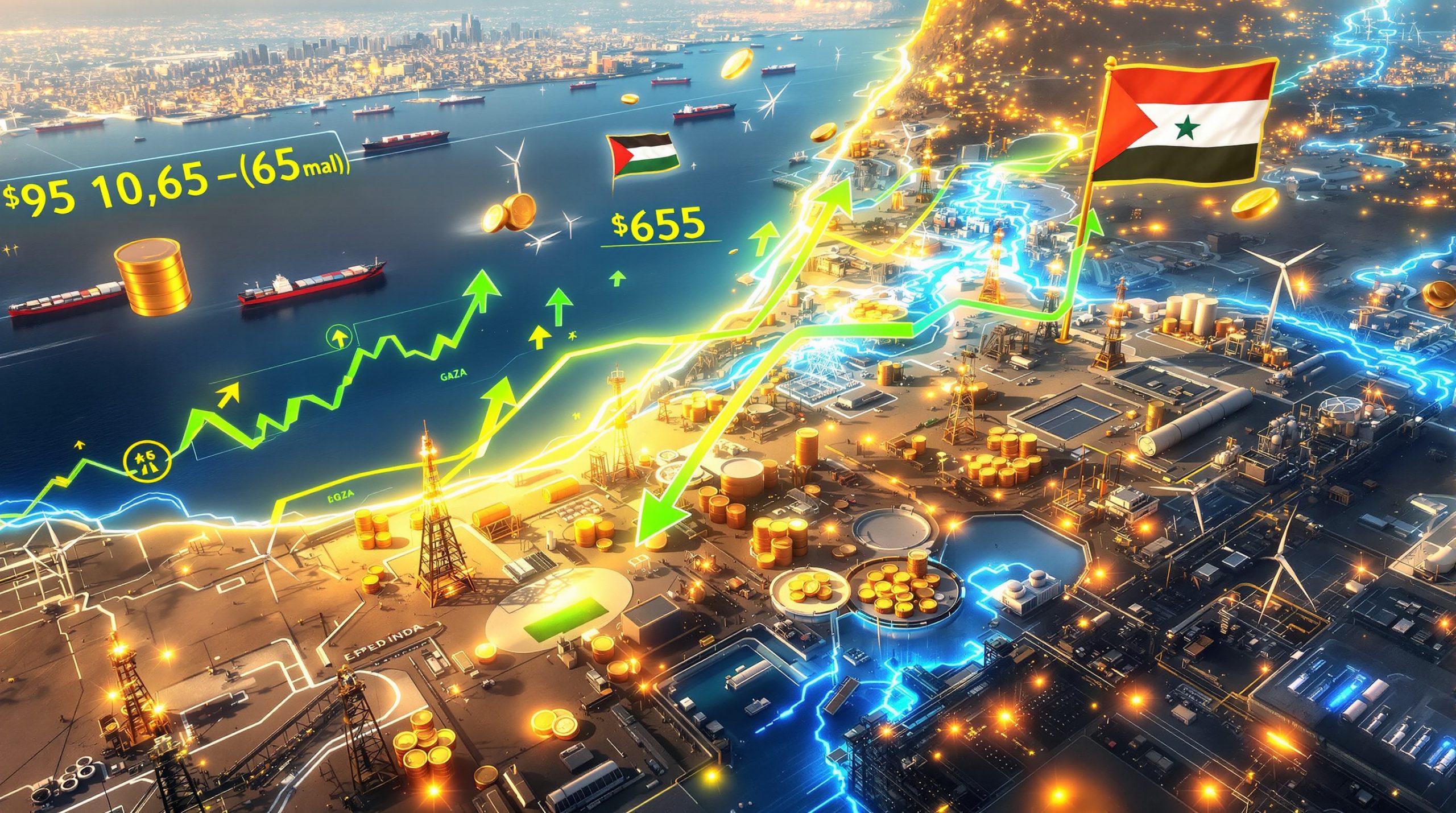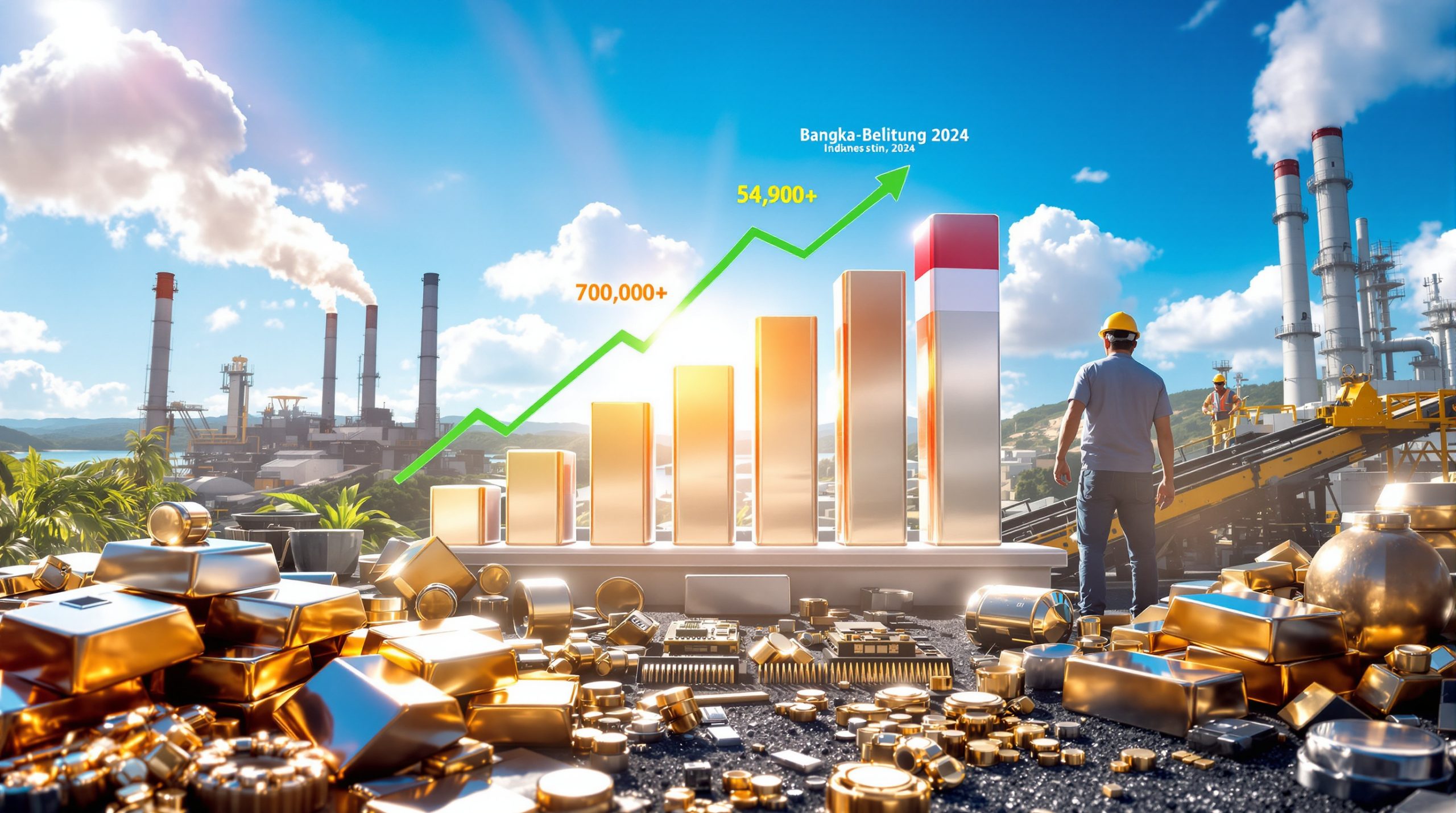What's Driving the Current Rare Earth Price Rally?
The rare earth elements market is experiencing a significant upward price trajectory in mid-2025, driven by a complex interplay of supply constraints, strategic buying patterns, and shifting market psychology. This rally, particularly noticeable in oxide prices, has created ripple effects throughout the entire rare earth supply chain.
Environmental Regulations Impact Supply
Environmental protection measures in China's Jiangxi Province have emerged as a primary catalyst for the current price surge. Several separation plants in this critical rare earth processing hub have been forced to halt operations, creating an immediate supply bottleneck in the global market.
"The environmental compliance requirements implemented in Jiangxi have removed approximately 15% of China's separation capacity from the market virtually overnight," notes industry analyst Zhang Wei from SMM Research. "This isn't a temporary shutdown—these facilities must undergo comprehensive environmental upgrades before resuming operations."
The supply constraints are particularly acute in the oxide market, where processing capacity cannot be quickly relocated or substituted. With Jiangxi being home to facilities that process both light and heavy rare earth elements, the environmental measures have affected the entire spectrum of rare earth products.
Regulatory compliance costs are adding further pressure to producer margins, with smaller processors particularly vulnerable to the financial burden of implementing enhanced environmental controls. Industry estimates suggest compliance costs have increased operational expenses by 12-18% for affected facilities.
Regional production shifts are already occurring as companies scramble to adapt to the new environmental standards. Processors in Inner Mongolia and Sichuan provinces are attempting to increase output, but technical limitations and permitting challenges prevent them from fully compensating for the Jiangxi shortfall.
Top-Tier Enterprise Procurement Patterns
Concentrated buying activity from major enterprises is fueling market momentum beyond what supply constraints alone would produce. Large manufacturers of permanent magnets, particularly those supplying the electric vehicle and renewable energy sectors, have accelerated their procurement cycles.
This strategic stockpiling behavior has created competitive pressure among buyers, who fear being left without sufficient materials for production in the coming quarters. According to market participants, order volumes from the top five Chinese magnetic material manufacturers have increased by approximately 22% compared to the previous quarter.
Forward purchasing strategies indicate long-term supply concerns among major consumers. Rather than the typical 2-3 month procurement window, many large enterprises are securing supplies 4-6 months in advance, a significant shift from historical patterns.
"We're seeing procurement cycles that diverge from typical seasonal patterns," explains industry consultant Li Jian. "Major buyers are front-loading their annual purchases, creating artificial demand spikes that further strain an already tight market."
Market Sentiment Analysis
A decidedly bullish outlook has gained momentum across the rare earth supply chain, with suppliers demonstrating unprecedented confidence through sequential price increases. This positive sentiment has become somewhat self-reinforcing, as each price increase validates the market's upward trajectory.
Speculative positioning is amplifying price movements beyond what fundamentals might support. Traders and investors are increasingly taking long positions in rare earth materials, anticipating further price appreciation based on the supply constraints and procurement trends.
The market psychology has noticeably shifted toward a scarcity mindset, despite mixed signals from ultimate end-use demand. This cognitive bias is creating a disconnect between current prices and actual consumption rates in some segments, particularly for heavy rare earth elements.
"The current market exhibits classic signs of fear-driven purchasing. Whether this reflects genuine supply concerns or speculative excess remains debatable, but the price impact is undeniable." – Dr. Sarah Chen, Rare Earth Economics Specialist
How Significant Are the Current Price Increases?
The magnitude of recent price movements varies significantly across different rare earth elements, with some experiencing dramatic surges while others show more moderate appreciation. Understanding these differentiated movements provides insight into both supply vulnerabilities and demand drivers.
Oxide Market Price Movements
Praseodymium-Neodymium oxide (PrNd) prices have climbed to ¥450,000-452,000 per metric ton, representing a 7.8% increase from the previous month. As the primary input for NdFeB permanent magnets, PrNd oxide serves as a bellwether for the broader rare earth market, and its steady appreciation signals robust demand fundamentals.
Dysprosium oxide has seen even more dramatic movement, reaching ¥1.65-1.66 million per metric ton—a 12.3% month-over-month increase. As a critical heavy rare earth element used to improve temperature resistance in high-performance magnets, dysprosium's price surge reflects both its supply vulnerability and strategic importance.
Terbium oxide commands premium prices of ¥7.16-7.2 million per metric ton, having appreciated nearly 15% since the beginning of the quarter. This exceptional valuation stems from terbium's limited global supply and critical applications in both magnets and phosphors for lighting technologies.
Gadolinium oxide prices have risen to ¥164,000-165,000 per metric ton, a more modest 5.2% increase. While essential for specialized applications like MRI contrast agents and certain magnetic materials, gadolinium's more balanced supply-demand dynamics have tempered its price appreciation.
Holmium oxide values have increased to ¥525,000-530,000 per metric ton, while erbium oxide has maintained relative stability at ¥306,000-310,000 per metric ton. These medium-heavy rare earths, with more specialized applications, have experienced less dramatic price volatility than elements central to the permanent magnet industry.
Metal Market Price Trends
Praseodymium-Neodymium alloy prices have advanced to ¥550,000-555,000 per metric ton, reflecting a 6.4% increase that has slightly lagged behind the corresponding oxide price appreciation. This gap indicates the challenges in passing increased raw material costs through to metal products.
Dysprosium-iron alloy is trading at ¥1.59-1.61 million per metric ton, having gained approximately 9.1% over the past month. The price transmission from oxide to alloy has been more effective for dysprosium compared to PrNd, likely due to its irreplaceable role in high-temperature magnet applications.
Terbium metal has reached extraordinary valuations of ¥8.85-8.9 million per metric ton, cementing its position as one of the most valuable industrial metals in the world. This price point represents a 12.7% increase from the previous quarter, indicating strong demand from specific high-tech applications.
Gadolinium-iron alloy prices stand at ¥158,000-160,000 per metric ton, while holmium-iron alloy maintains stability at ¥525,000-530,000 per metric ton. These specialized alloys have seen more modest price movements, reflecting their smaller markets and more limited application scope.
Lanthanum-cerium alloy prices have held steady at ¥17,000-19,000 per metric ton, demonstrating the stark valuation difference between light rare earth elements with abundant supply and the more scarce medium-heavy rare earths. This price stability contrasts sharply with the volatility seen in magnet-related materials.
Comparative Price Analysis
Week-over-week percentage increases show an accelerating trend across key rare earth elements, with average gains of 3.2% in the most recent week compared to 1.7% in the previous period. This acceleration pattern suggests growing market momentum rather than a stabilizing trend.
Month-over-month data reveals that price trajectories began modestly in early Q2 before accelerating significantly in June and early July. This pattern correlates directly with the implementation timeline of environmental measures in Jiangxi Province.
Price volatility metrics compared to historical averages show current fluctuations exceeding standard deviations by approximately 40% for most elements, indicating unusual market conditions. This elevated volatility creates challenges for contract pricing and risk management throughout the supply chain.
Price premiums between Chinese domestic and export markets have expanded to 8-12% for most elements, compared to a historical average of 5-7%. This widening gap reflects both increased domestic demand and the strategic importance of rare earths in China's industrial policy.
| Element | Current Price (Yuan/mt) | Monthly Change (%) | YTD Change (%) | Volatility Index |
|---|---|---|---|---|
| PrNd Oxide | 450,000-452,000 | +7.8% | +22.3% | 1.4 |
| Dy Oxide | 1,650,000-1,660,000 | +12.3% | +31.7% | 1.8 |
| Tb Oxide | 7,160,000-7,200,000 | +15.0% | +38.2% | 2.1 |
| Gd Oxide | 164,000-165,000 | +5.2% | +14.6% | 1.2 |
| Ho Oxide | 525,000-530,000 | +4.1% | +11.8% | 1.1 |
| Er Oxide | 306,000-310,000 | +1.8% | +6.7% | 0.9 |
Why Is the Metal Market Experiencing Transaction Pressure?
Despite the bullish price trends in rare earth oxides, the metal market faces distinct challenges in transaction execution. This segment of the supply chain is experiencing friction that reveals important insights about the broader market dynamics.
Demand-Supply Imbalance Factors
Weak end-use demand is creating resistance to price increases in metal markets, particularly among smaller magnetic material manufacturers facing margin pressures. While oxide prices have climbed substantially, downstream consumers have shown reluctance to accept comparable increases in metal and alloy prices.
"We're witnessing a classic cost-push versus demand-pull conflict," explains industry economist Wang Feng. "The pressure originates from supply constraints pushing costs upward, but inadequate end-demand fails to pull prices higher through the entire value chain."
Magnetic material manufacturers, especially those serving consumer electronics and non-EV industrial applications, report order volumes 7-12% below forecast for Q3 2025. This softness creates hesitation to accept higher input costs that cannot be passed to their customers.
Inventory management strategies are shifting among downstream consumers, with many drawing down existing stocks rather than purchasing at current price levels. This behavior creates an artificial demand suppression that may eventually result in accelerated purchasing once inventories reach critical levels.
Price Transmission Challenges
Metal producers are facing margin compression despite rising oxide costs, caught between supplier price increases they cannot avoid and customer resistance to higher prices. For some products, margins have contracted by 3-5 percentage points compared to Q1 2025.
Incomplete price transmission through the value chain has created economic stress points, particularly for processors without vertical integration. Companies operating exclusively in the metal conversion stage without upstream oxide production or downstream magnet manufacturing face the greatest pressure.
Divergent price quotes are creating market confusion, with some desperate sellers offering discounts while others maintain higher asking prices. This quote spread has expanded to 3-4% for most metals, compared to a typical spread of 1-2%, indicating market dysfunction.
Tactical discounting has emerged as sellers attempt to facilitate transactions in challenging conditions. "Some suppliers are offering 'volume incentives' or 'strategic partnership discounts' that effectively lower prices without publicly reducing their official quotes," notes trader Li Wei from Ganzhou Metal Exchange.
Transaction Volume Analysis
The oxide market is capturing the majority of transaction activity, with volumes approximately 25% above quarterly averages. This concentration in earlier-stage products reflects both the supply constraints at separation facilities and speculative buying at the oxide level.
Metal market transaction volumes have fallen to approximately 70-80% of normal levels, with some specialized alloys seeing even lower activity. This below-average transaction pattern creates a concerning disconnect between quoted prices and actual market clearance rates.
The price-volume relationship reveals potential market correction points, particularly for metals where quoted prices have increased by more than 10% while transaction volumes have decreased by similar percentages. This inverse correlation typically indicates unsustainable pricing that may eventually adjust downward.
Regional transaction patterns show significant variations across China's rare earth hubs. Southern processing centers closer to the affected Jiangxi separation facilities report transaction volumes at 65% of normal, while northern facilities in Inner Mongolia maintain volumes at 85-90% of typical rates.
What Are the Implications for Different Market Segments?
The current rare earth market dynamics affect various industry segments differently, creating both challenges and strategic opportunities across the value chain. Understanding these differentiated impacts is essential for market participants navigating the volatile landscape.
Magnetic Materials Industry Impact
Large magnetic material enterprises are driving demand for Pr-Nd alloy, with the top five manufacturers accounting for approximately 60% of recent transaction volume. Their procurement strategies heavily influence market dynamics, creating both price momentum and transaction clustering.
Cost absorption challenges are most acute for medium-sized magnetic manufacturers, who lack both the pricing power of industry leaders and the agility of smaller specialty producers. These mid-tier companies typically face a 15-20% higher effective cost impact than their larger competitors due to less favorable purchasing terms and inability to pass costs downstream.
Product pricing strategies are rapidly adjusting to input cost increases, with a noticeable trend toward more sophisticated pricing models. "We're seeing a shift from quarterly fixed pricing to more dynamic models incorporating material cost adjustments and even indexed pricing tied to published rare earth benchmarks," notes manufacturing consultant Zhang Mei.
Innovation pressure to reduce rare earth content in magnetic applications has intensified, with R&D investments in this area increasing approximately 35% year-over-year among major manufacturers. Techniques being explored include grain boundary diffusion, which can reduce heavy rare earth usage by up to 30% while maintaining performance characteristics.
Heavy Rare Earth Elements Market Dynamics
Medium-heavy rare earth metals face distinct demand challenges compared to light rare earths, with more specialized and fragmented application profiles creating less consistent demand patterns. While dysprosium and terbium benefit from permanent magnet applications, elements like holmium and erbium rely on smaller, more specialized markets.
Price-demand elasticity differences between light and heavy rare earths have become increasingly apparent, with heavy rare earth prices showing approximately 30% less demand elasticity. This relative inelasticity stems from the difficulty in substituting these elements in high-performance applications.
Application-specific demand variations are creating market imbalances, with elements used in multiple growth sectors (like terbium in both magnets and quantum dots) experiencing more robust demand than single-application elements. This differentiation helps explain the wide price disparities between seemingly similar rare earth elements.
Strategic importance versus current demand creates market contradictions for certain heavy rare earths. "Some elements are being acquired and stockpiled based on future technological roadmaps rather than current consumption requirements," explains materials strategist Dr. Liu Ying. "This creates price support disconnected from present industrial activity."
Supply Chain Adaptation Strategies
Supplier quote management tactics have evolved in response to market conditions, with many suppliers now issuing quotes valid for just 24-48 hours rather than the traditional 7-10 days. This shortened validity period reflects both market volatility and supplier attempts to capture upside potential.
Strategic inventory positioning throughout the value chain has shifted dramatically, with inventory-to-sales ratios declining approximately 20% at the oxide level while increasing 15% at the end-user level. This opposing movement indicates divergent risk assessments between supply chain segments.
Contract structure modifications are being implemented to manage price volatility, including the introduction of price caps, floors, and adjustment mechanisms. These more complex arrangements reflect the challenges of traditional fixed-price contracts in the current volatile environment.
Alternative sourcing explorations have gained momentum, with interest in non-Chinese rare earth sources increasing significantly. Industry publications report a 65% increase in inquiries to Australian, Canadian, and American rare earth projects in the past quarter, although actual supply diversification remains limited by production realities.
What's the Short-Term Market Outlook?
The rare earth market's trajectory over the coming months will be shaped by supply responses, demand evolution, and broader macroeconomic factors. While current conditions support continued price strength, several variables could alter this outlook.
Price Trajectory Projections
Sustained price support is expected in the near term, with most analysts forecasting continued price appreciation of 3-5% monthly for key elements through Q3 2025. This outlook is predicated on the persistence of current supply constraints and procurement patterns.
Market sentiment will likely maintain upward pressure independent of fundamental changes, as the psychological momentum of the current rally creates its own support. This sentiment-driven component could add an additional 1-2% to price movements beyond what supply-demand fundamentals would suggest.
Potential price correction triggers to monitor include any announcement of Jiangxi separation plants resuming operations, which would immediately change market psychology even before actual production resumed. Similarly, any significant demand deterioration in key consuming sectors like electric vehicles could rapidly shift sentiment.
Seasonal factors may influence upcoming market movements, particularly as Q3 historically sees moderated industrial activity in China due to summer production adjustments. This seasonal pattern could temporarily dampen the current rally, creating a consolidation phase before Q4 activity resumes.
Supply Response Potential
The timeline for Jiangxi separation plants to resume operations remains uncertain, with local government sources suggesting environmental compliance reviews will continue through at least August 2025. This prolonged shutdown extends the supply constraint beyond initial market expectations.
Production capacity adjustments at operational facilities have already begun, with facilities outside the affected region reporting utilization rates increasing from 85% to 92-95%. However, this intensification cannot fully compensate for the Jiangxi shortfall due to technical limitations and ore supply constraints.
Alternative supply source development continues globally, though meaningful production increases from non-Chinese sources remain at least 12-18 months away. The most advanced projects in Australia and North America report being at 60-70% of targeted capacity, with continued challenges in achieving consistent separation quality.
Import/export dynamics affecting domestic Chinese supply have shifted, with China reducing rare earth exports by approximately 8% in the first half of 2025 compared to the same period in 2024. This reduction in export volume increases pressure on international consumers while supporting domestic
Ready to Spot the Next Major Mining Discovery?
Discover how real-time alerts on significant ASX mineral discoveries can transform your investment strategy with Discovery Alert's proprietary Discovery IQ model, providing you with actionable insights ahead of the broader market. Visit our discoveries page to explore how historic mineral discoveries have generated substantial returns and begin your 30-day free trial today.




